Whenever we think of Disney princesses, we cannot help but imagine their distinctive outfits. However, while Princess Belle always dons a yellow dress when she appears with the Beast, the reality of 18th-century fashion is quite different from what we see on screen. AI technology has helped recreate accurate versions of these characters’ outfits based on historical context:
Snow White in 15th Century German Fashion
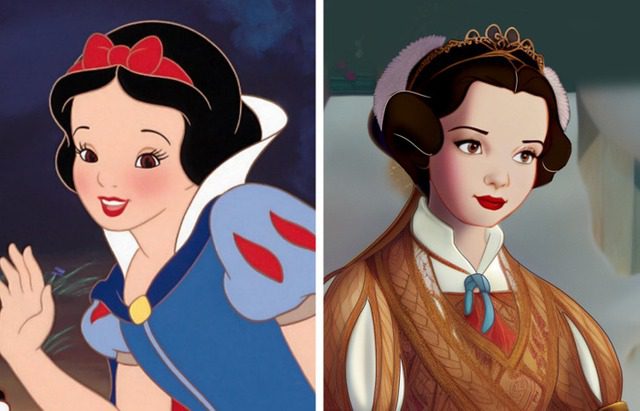
The original tale was published in 1937 and inspired by Margaretha von Waldeck, a noblewoman born in 1533, thus drawing from the backdrop of that time period.
Unlike the dresses portrayed by Disney animation studios today, 15th-century women wore high-waisted, luxurious gowns with many layers of lightweight fabric underneath. A notable difference in Disney’s design is the sleeves.
Sleeping Beauty in 14th Century French Fashion
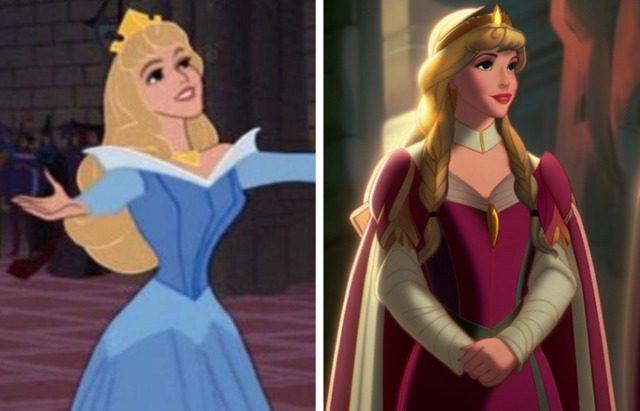
The most famous version of this tale was recorded by Charles Perrault in his book Histoires ou contes du temps passé in 1697, although there are mentions of the story dating back to as early as 1330 in Perceforest. Therefore, it can be assumed that the main character lived during that historical period.
During this time, women wore quite fitted dresses and did not have wide sleeves. Instead, they tended to wear long, flowing skirts adorned with multiple layers.
Little Red Riding Hood in 19th Century German Fashion

The Brothers Grimm published the most well-known version of this story in their 1812 collection, though it may have existed in some form prior. The character Little Red Riding Hood is often depicted as a central figure in the tale. By the 19th century, dresses began to grow more luxurious, and Little Red Riding Hood’s dress would resemble the one in the image.
Jasmine in Middle Eastern Fashion
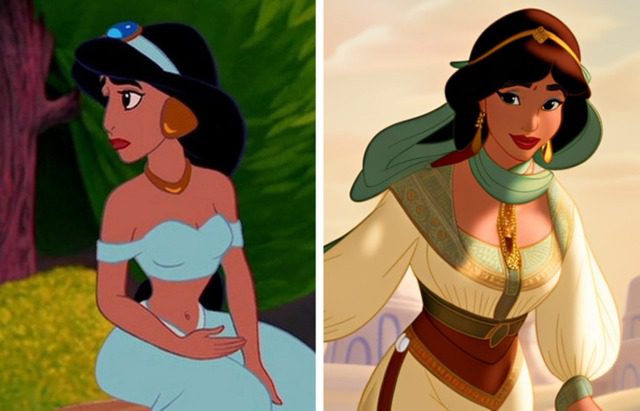
Initially, Aladdin is one of the most famous tales from the collection of One Thousand and One Nights. Set in the ancient Middle East, Aladdin’s fashion reflects the region’s traditional clothing. The attire in this area has changed very little over the years, as its purpose remains the same: protecting the wearer from the harsh climate and sand. The outfit consists of a long-sleeve shirt, loose trousers, and a long outer garment known as a jellaba.
Belle in 18th Century French Fashion
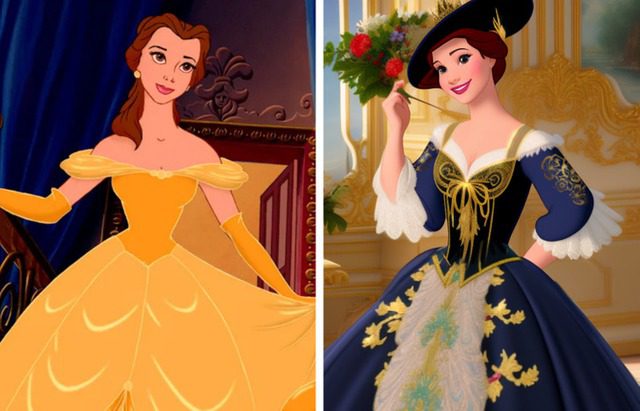
Beauty and the Beast was written by French novelist Gabrielle-Suzanne Barbot de Villeneuve in 1740. When portrayed, Belle would have had to wear vastly different gowns according to the fashion of 18th-century France.
A distinctive feature of 18th-century fashion is the fitted bodice, which has a square neckline, wide lace collar, and floral decorations at the front. As for colors, pastel shades were favored to evoke a gentle and refined appearance. The sleeves were often wide and tapered at the elbow, complementing the skirts worn underneath.
Rapunzel in 17th Century German Fashion

Tangled, released in 2010, is based on the fairy tale of Rapunzel by the Brothers Grimm published in 1812, which was inspired by the earlier French story Persinette written by Charlotte-Rose de Caumont de La Force in 1698. Consequently, the story of the princess is set against a backdrop of late 17th-century Germany. In this period, women wore low-cut blouses that were wide at the shoulders and fitted at the waist. The sleeves were often wide, tapering at the wrists, while the skirt reached down to the feet. Over time, the length of the dress would shorten to accommodate a more layered look.
Elsa in 19th Century European Fashion
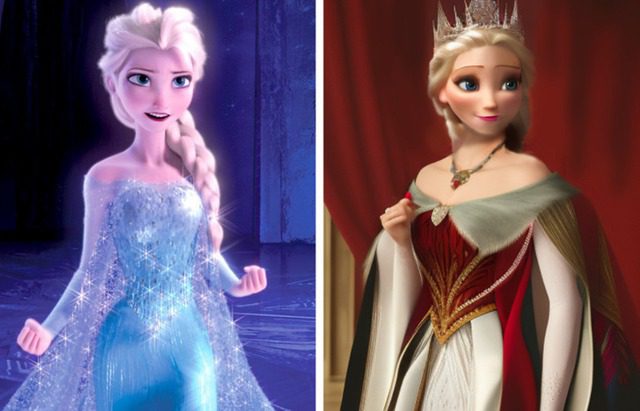
Frozen is based on the fairy tale The Snow Queen, originally published by Danish author Hans Christian Andersen in 1844. Therefore, examining the inspiration sources for Disney’s tale, it might draw from the backdrop of the 19th century, set in Europe, particularly since the fictional kingdom of Arendelle resembles a Scandinavian landscape.
According to fashion analysis, Elsa’s style is likely to be similar to Cinderella’s because the fashion between European countries during this time was not significantly different. Thus, she would likely wear a flowing gown adorned with luxurious embellishments.
Megara in Ancient Greek Fashion

Hercules revolves around the adventures of the ancient Greek demigod. In ancient Greek fashion, women typically wore draped and flowing garments. Their attire consisted of two main pieces: an inner garment and an outer robe. The primary difference in women’s and men’s fashion was that women’s garments were longer, reaching down to their ankles, while men’s clothing typically stopped at the knee. Colors were often neutral, but artisans would add vibrant details that were more common among the wealthier classes. Notably, the color purple was considered the highest symbol of nobility and wealth.
Source: Bright Side





















